High-speed trains (1) run from Taskent, the Uzbek capital, to Samarkand and Bhukara. The railway station at Samarkand is rather elaborate, adorned with crystal chandeliers and stained glass windows.
The landscape to Bhukara was gently undulating to relatively flat, looking fairly green on this late winter day (2). Goatherds led their flock through the winter pastureland. Passing one farmstead, a dog came sprinting from the house toward the train. One would think he would be used to the trains running behind the house. Bhukara railway station is a long way from the town (3), more than 10 kms.
Like Samarkand, Bhukara's heyday was during the Timurid period (beginning c. 1400 C.E.) Only two structures survived the sacking of the city by Ghengis Khan: the Ismail Samani Mausoleum, and the golden minaret. Legend has it that the conqueror lost his hat when he craned his neck to see the top of the minaret. So impressed was he by the height that he ordered the minaret be preserved from destruction.
Modern Bhukara is smaller than Samarkand, so the old city is less hemmed in by the modern city. Strolling past markets, madrassas, minarets, and mosques, I admired the distinctive blue glaze on many of the walls and domes topping buildings in the old city. As in Samarkand, many of the historic buildings here were moldering ruins rebuilt in the 20th century.
The old fortress (Ark) lies just west of rhe old city. The mosque inside the fortress (4), supported by wooden columns, is richly decorated and contains a small museum of Arabic calligraphy. An ecology museum here has an exhibit on the Aral Sea, which has withered away to less than 20% of its size since 1960 due to diversion of the inflow for agriculture. The area is now known as the Aralkum desert. Walking the fortress parapets offers fine views of the city, both old and modern.
Furthest west is a modern urban park that contains a pre-Ghenghis Khan Mausoleum. Here, I encountered a couple speaking English; he was Afghan, she was Lithuanian.
Back in the main square at sunset, two muezzins sang out the call for prayer, starting at two different times from different mosques, the sound sonorously echoing off the walls.
(1) Relatively high speed, between Samarkand and Bhukara the train just travels at under 160 kph (about 100 mph). Not bad for North America, but slow for Europe. The trains are called Afrosiyob, after the ancient name for Samarkand. The train sets come from Spain.
(2) Spring is the the rainy season here.
(3) The airport is actually closer to the city center than the railway station.
(4) Entering the mosque a local woman asked me: Italiano? So far this trip, someone has also guessed I waz Slovakian.
A clear morning in Samarkand
At the train station
Afrosiyob high-speed train bound for Bhukara
Grade crossing

Arrival at Bhukara
Times to pray today at small mosque
View of Mir-i-Arab Madrasa from the back
Souq/Marketplace
The Golden Minaret. Note the ubiquitous Chevy Damas in the foreground
View of Kalan Mosque
The Mir-i-Arab Madrasa, still an active school
At the Kalan Mosque
Fingerpost sponsored by Coke.
The Ark of BhukaraThe mosque at the Ark
Detailed Quran Calligraphy, c. 1,000 C.E.
View from the Ark walls
View of modern mosque to the North
Crescent moon over the mosque. I considered coming back later with moon lower in the sky (and thus closer to the mosque dome) to get a better shot. The moonset bearing was not conducive, plus the increasing clouds, and a very early train departure tomorrow dissuaded me.

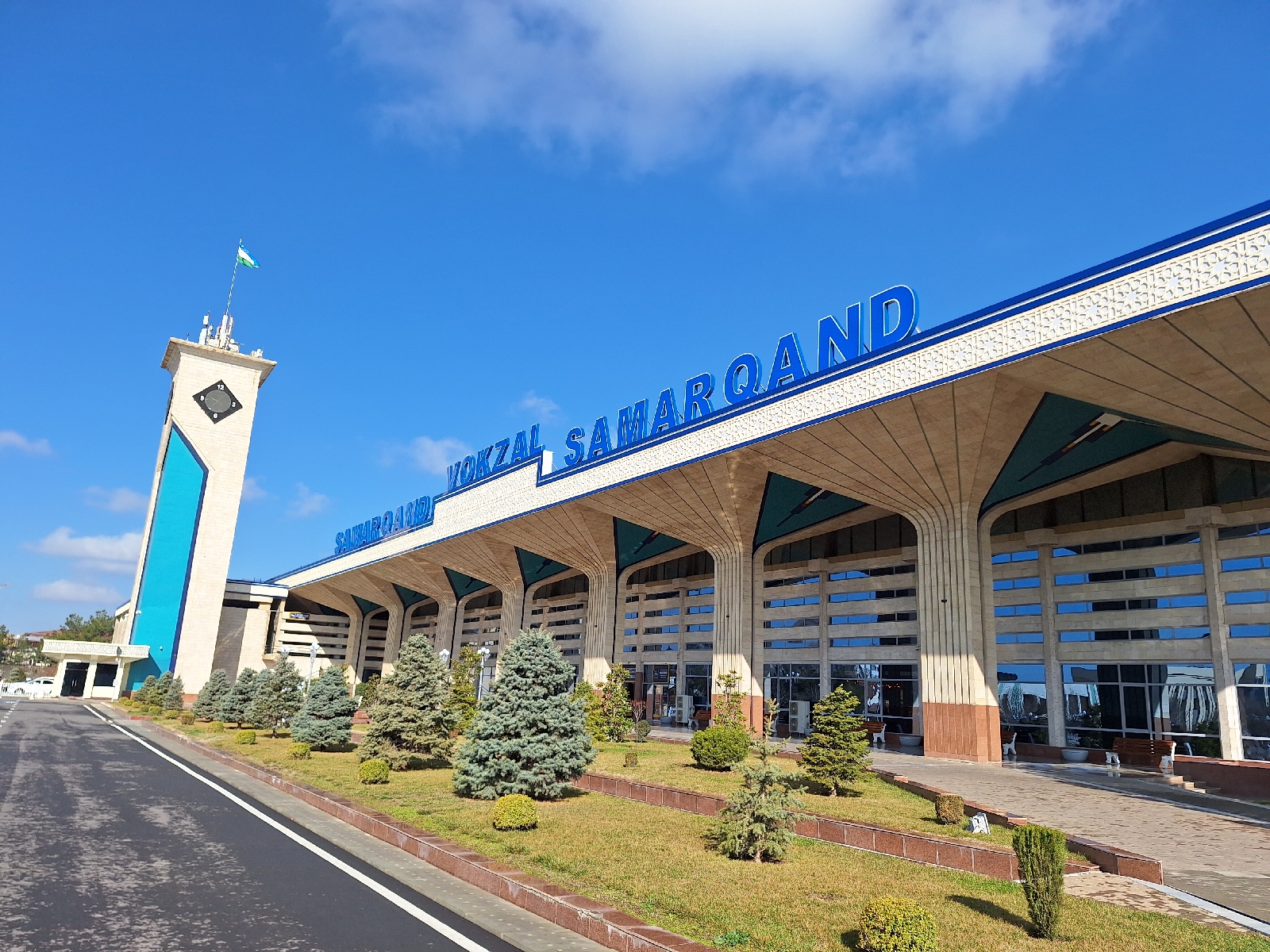


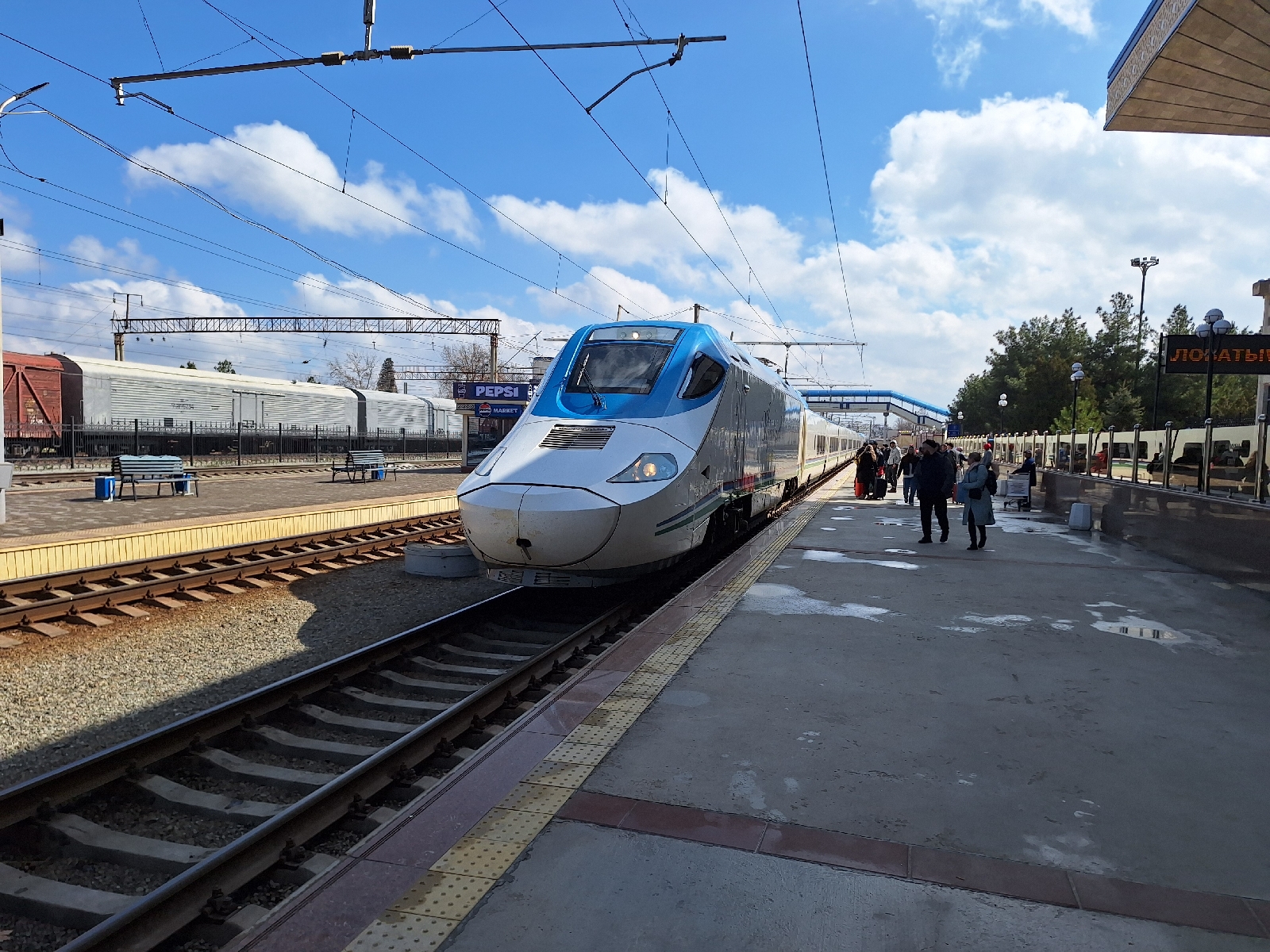

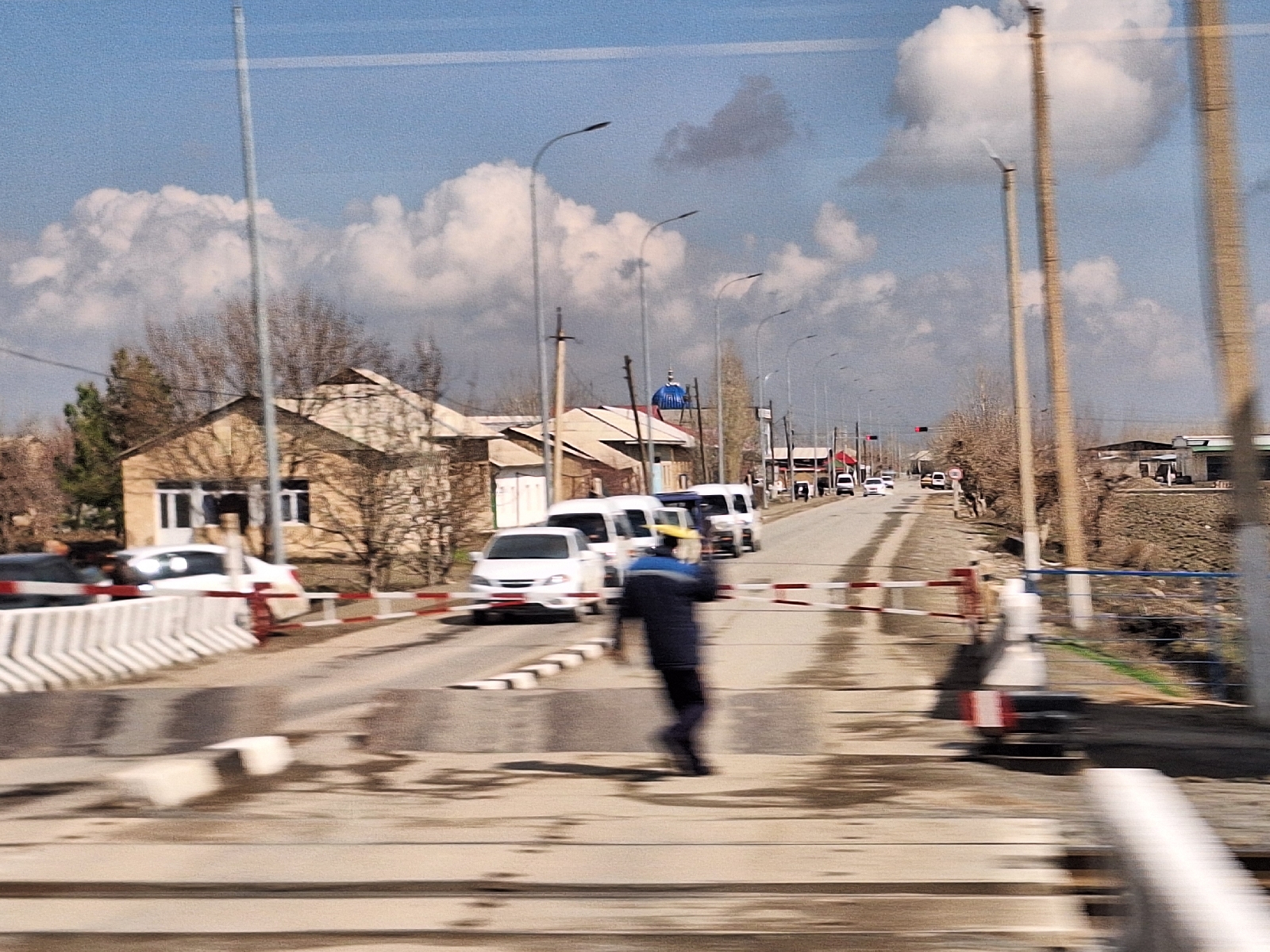
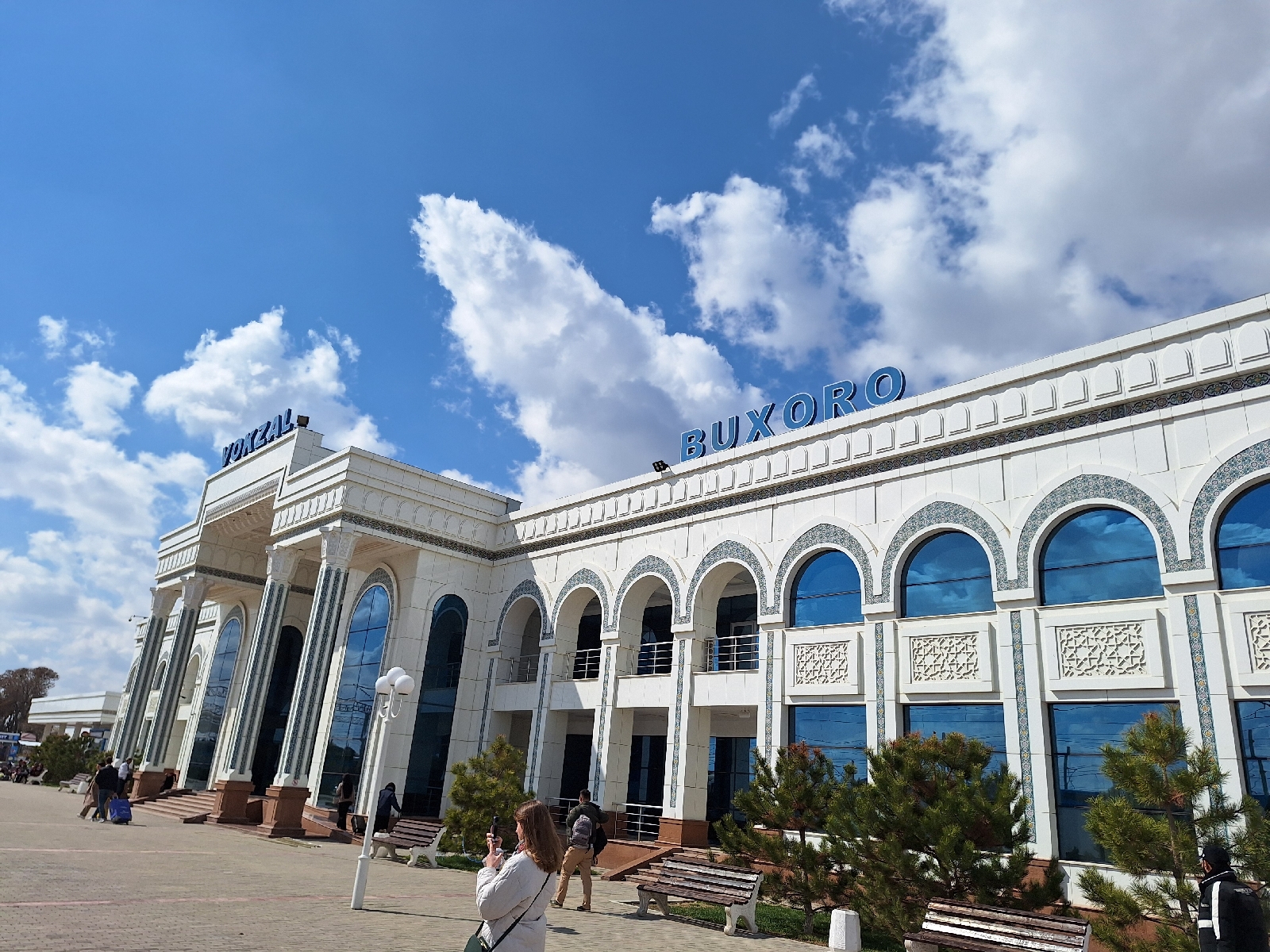


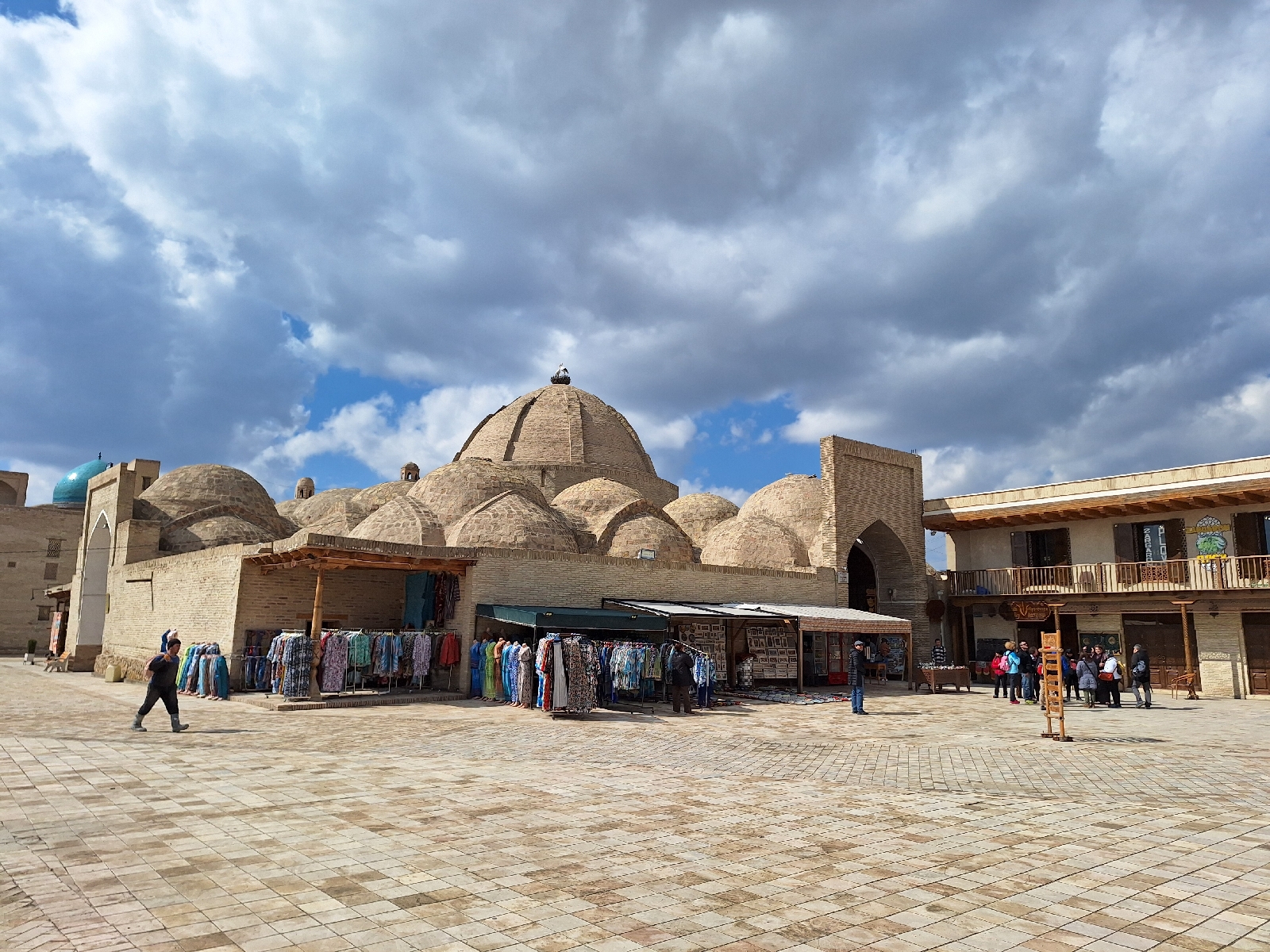






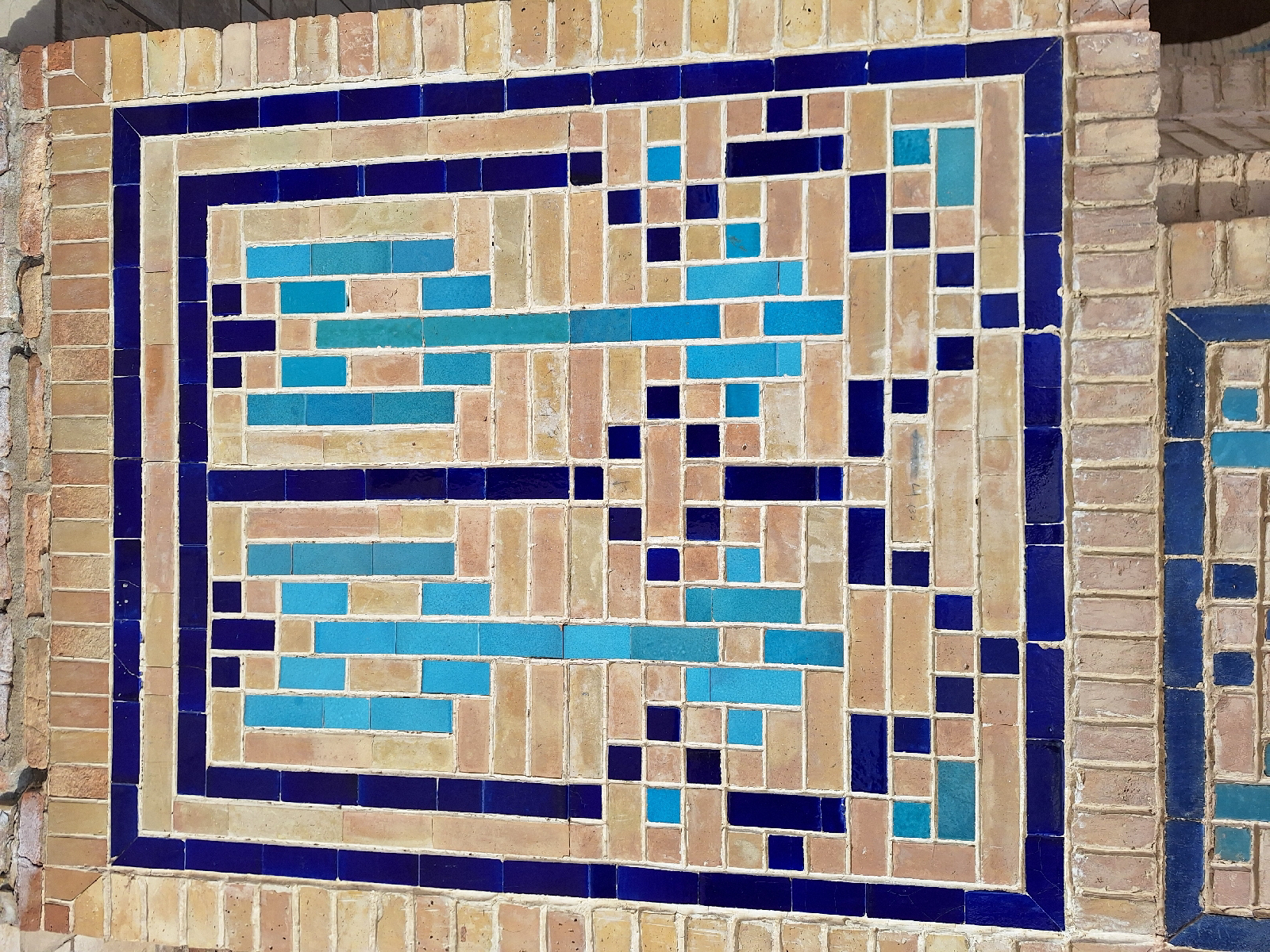



















No comments:
Post a Comment